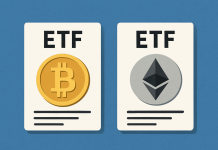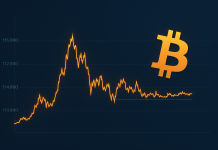[ad_1]
Cryptocurrency scams take many forms. But one thing they all share is the goal of enriching their founders at the expense of investors. If a crypto project is “investing” a large portion of its capital into lavish parties, PR stunts and marketing, there’s a strong chance that it’s a scam.
Also read: Debit Card Issuer Bitnovo Announces Bitcoin Cash Support
The Bigger the Party, the Greater the Comedown
It was late October, 2017, and bitcoin was eyeing $6,000 territory as it geared up for a two-month bull run, the likes of which had never been seen before and has never been seen since. Money was flooding into the crypto markets, and while most people were happy to claim a piece of the pie by acquiring rapidly rising assets like BCT, ETH, and the newly birthed BCH, for some investors this wasn’t enough. They’d heard about the guaranteed daily interest that could be earned from a coin called Bitconnect and they wanted in.
The gigantic scam that Bitconnect perpetrated has been detailed and memed to death, but there is one element of the case that has largely escaped scrutiny until now: the amount that senior Bitconnect figures were spending to lure new victims into their web. In late October of 2017, Bitconnect was a top 10 cryptocurrency, ranked eighth by market cap, with each token trading for around $213. Newly released chat logs show the amount of money that was sloshing around in Bitconnect’s dev fund, used to pay for Youtubers to shill the project as well as to host parties and shower major earners in the project’s pyramid referral scheme with gifts.

$1 Million a Day
Twitter account @bccponzi, which has doggedly detailed the Bitconnect scam for over a year, has analyzed some of the leaked Skype chats from senior figures Glenn Arcaro, Trevon James and Craig Grant. In October, the trio began spending $1,000 a day on Google and Facebook ads, and by November Craig Grant alone was spending $3,000 a day on ads. “I don’t track anything,” he confessed. “Just spend money, make more money.” By that point, Trevon James was bringing in over $1 million of new business a day, and their ad campaigns had helped Bitconnect to raise over $10 million a week in the US alone.

When Marketing Goes Too Far
Most cryptocurrency projects aren’t outright scams in the Bitconnect sense, but their willingness to fritter away millions of dollars on gimmicks and indulgences should still raise red flags. Even legitimate projects such as Dash have attracted protest from some community members due to the amount spent on marketing including sponsoring sports stars.
At the extreme end of the scale, there are projects like HOQU, whose founders rinsed millions of dollars of investor money on sports cars and other luxury items. And then there’s Askfm, the Ukrainian project whose PR stunt led to a sherpa dying on Mount Everest, and whose latest venture – airdropping tokens from a rocket – sought to cash in on the tragedy with an email titled “Askfm kicks off a new stunt – this time without killing a sherpa”.

Bitcoin – the world’s most successful crypto project by a country mile – began life with no fanfare and zero marketing spend. It grew organically, its success fueled by its creator’s desire to ship code rather than engage the services of PR companies and host gimmicky giveaways. Bitcoin is a tough act to follow, but meritorious projects can still distinguish themselves from the fluff by building rather than shilling.
The Proof of Work newsletter, whose sole purpose is to detail project updates from cryptocurrency teams, is a good yardstick when it comes to that. Some level of marketing spend is almost inevitable to get noticed. But when a project favors style over substance, PR over product, investors should take heed and steer clear.
Do you think a large marketing spend is required to get noticed in the cryptocurrency space? Let us know in the comments section below.
Images courtesy of Shutterstock, and Twitter.
Need to calculate your bitcoin holdings? Check our tools section.
http://platform.twitter.com/widgets.js
[ad_2]
Source link




